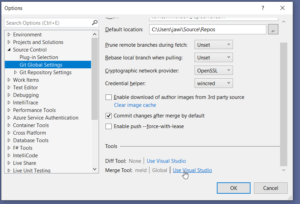Throughout my career, I’ve been involved in numerous projects with varying degrees of success. One thing I’ve learned is that a successful onboarding strategy is essential to any project’s success, but it’s often overlooked.
In this guide, I’ll share some common pitfalls that can make onboarding new developers difficult and how to avoid them, ensuring a smoother and more efficient onboarding process.
Choose the right Templating Engine
Razor Using Razor as your templating engine ensures that your project aligns with industry standards and is easily understood by new developers. Razor is a mature, powerful, and user-friendly engine that integrates seamlessly with the MVC framework.
Adopt a Clear and Simple Branching Strategy
Implementing a well-defined branching strategy like GitFlow or trunk-based branching can streamline your development process. Avoid creating too many branches with unclear names, and always close dead branches after merging to keep your repository clean and understandable.
Use Descriptive and Consistent Environment Names
When naming environments, be as descriptive and consistent as possible to avoid confusion. Stick to a clear and logical flow, such as local -> Development -> Testing -> Staging -> UAT -> Production, and enforce this process using the right DevOps tooling and configuration.
Simplify Your Build and Deployment Process
Implementing continuous integration and an automated build and deployment pipeline is essential in today’s development landscape. Strive to simplify your deployment process and ensure it’s easily understood by your team.
Use Version Control and Automation for Database Scripts
Proper version control and automation tools like DBUP can simplify your database management process. Avoid using comments to track changes and manual deployment of SQL scripts, as this can lead to confusion and human errors.
Encourage Knowledge Sharing and Collaboration
Promote documentation, knowledge sharing, and collaboration within your team. This helps ensure that everyone is on the same page, reducing the learning curve for new developers.
Standardize Your Technology Stack
Using a consistent technology stack simplifies onboarding and maintenance. Avoid mixing different frontend frameworks or CSS pre-processors, as this can lead to confusion and unnecessary complexity.
Focus on Relevant Unit Testing
Ensure that unit tests cover the essential parts of your application. Avoid testing external dependencies, such as third-party libraries, which can be assumed to be reliable if they are widely used and supported.
Minimise Dependencies and Choose Wisely
Only incorporate necessary technologies and libraries into your project. Avoid adding redundant dependencies, which can increase complexity and make it more challenging for new developers to understand the project.
Balance Coding Styles and Design Principles
While adhering to coding style guidelines is essential, don’t overlook the importance of solid design principles. Focus on maintaining a clean, maintainable codebase that adheres to the SOLID principles, making it easier for new developers to contribute effectively.
By avoiding these pitfalls, you can create an onboarding process that is efficient, streamlined, and more accessible for new developers, ultimately contributing to the overall success of your project.

Awesome!